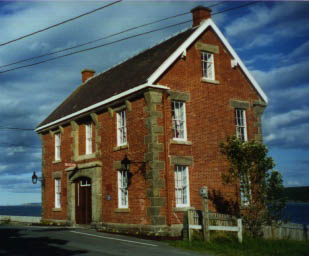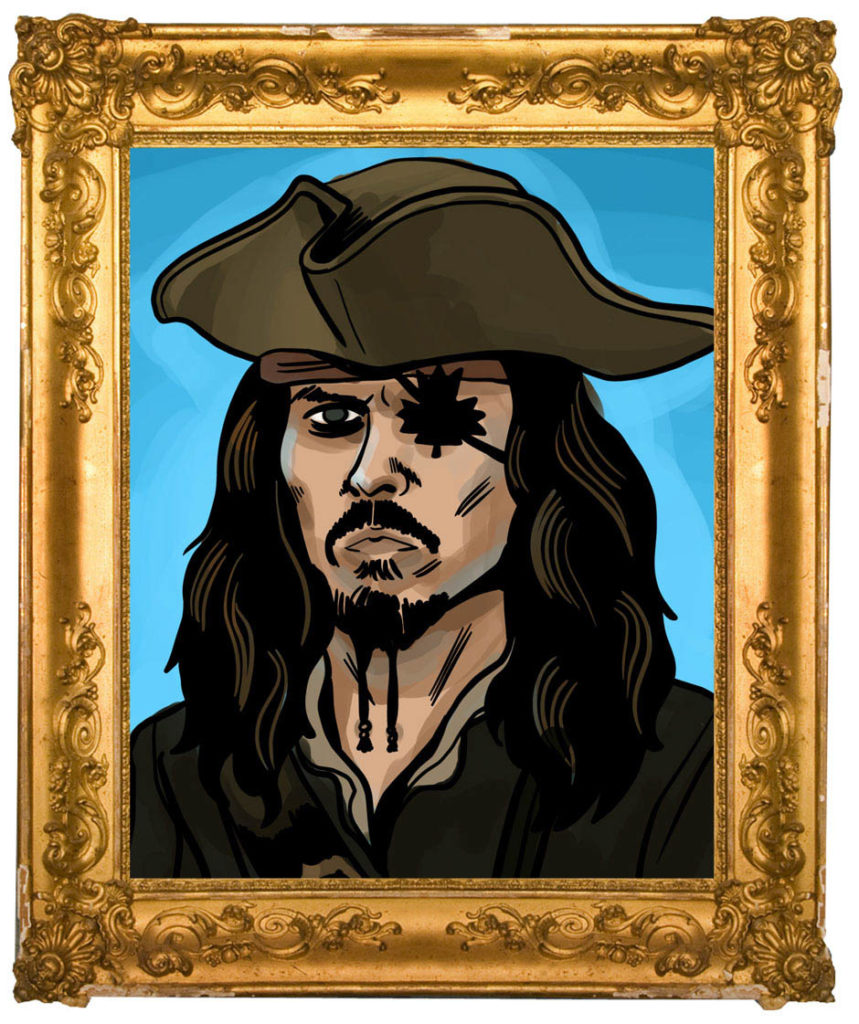Of the various pirates who lurked along the wild, sparsely inhabited coasts of Newfoundland in the 16th and 17th centuries, Peter Easton was among the elite, most successful and best known. His plundering, which ranged from Newfoundland and the Grand Banks south to the Caribbean and Spanish Main, made him the scourge of the Western Atlantic for more than a decade.
Easton was born of an old and respectable English family and grew up to serve in Queen Elizabeth I’s navy as a privateer. In 1602 on his way to Newfoundland escorting an English fishing convoy, Easton captured a Dutch pirate ship and found she carried prisoners from an Irish ship sunk by the Dutchmen. Among them was the daughter of the King of Connaught, a young lady named Sheila. Legend has it that Princess Sheila married Easton’s top lieutenant, Gilbert Pike, and on arriving in Newfoundland the couple settled at Mosquito, now known as Bristol’s Hope on the western shore of Conception Bay. When Easton returned to England, he found that Queen Elizabeth had died and her successor, King James I, had disbanded the navy. So the privateer decided to become a pirate, preying on merchant ships plying the western approaches to the English Channel.
His fleet was said to number 40 vessels by the time the king bowed to pressure from Easton’s victims and sent a squadron under a young captain Henry Mainwarring (who later also turned to piracy) to put a stop to the plundering. Tipped off to this, Easton took his ten best ships and crews and fled to Newfoundland, settling at Harbour Grace, just south of Mosquito. There he built a fort and settled down to some serious raiding.
He demanded paid tributes from fishing vessels on the Grand Banks, and built a flourishing trade in captured ships and goods. Among the fishing vessels and shore settlements Easton found a ready source of capable, and often quite willing, crewmen for his fleet.
Not only did the pirate fortify Harbour Grace, the late Newfoundland author Harold Horwood claims Easton also set up another base at Kelly’s Island on the far shore of Conception Bay, a place that abounds with lore of buried treasure and is said to even have been named after another pirate who was based there.
The Spanish colonies of the Caribbean and their treasure galleons were Easton’s favourite victims. He was sailing the San Sebastian, one of the richest prizes ever captured by a pirate, back to his Newfoundland headquarters in September, 1611, when he was forced to deal with another of his adversaries.
Ships protecting the French and Basque fishing fleets, in Easton’s absence, had raided and captured his fort at Harbour Grace. When they spotted the pirate’s fleet entering Conception Bay an intercepting squadron put out from the harbour and the battle was on. With daring and skill, Easton’s fleet defeated the Basques and wrecked their flagship St. Malo on a tiny islet outside the harbour, then they landed and re-captured their fort. It is said that 47 of Easton’s crew who died that day nearly 400 years ago are buried in a graveyard at Bear Cove near the mouth of Harbour Grace. Easton’s prize, the San Sebastian, eventually was thoroughly looted of treasure then burned and set adrift to ground further up the harbour where her bones may today still lie buried in the bottom.
With this sort of success, Peter Easton became a legend along the shores of Newfoundland. The first official English colony on the island, at Cupids a few miles south of Easton’s lair, came to depend on the pirate for protection from raiding Basques and others. But Easton, perhaps still loyal to the crown, began making overtures to King James for a pardon. Having captured the “admiral” of the English fishing fleet, Captain Richard Whitbourne, and kept him prisoner for 11 weeks, Easton released him on condition Whitbourne would petition the King for his pardon. This was eventually given and is documented in British records.
In the meantime, Easton decided to move his headquarters to Ferryland which faces the open Atlantic on the southern shore of the Avalon Peninsula. The pirate fortified the small harbour and continued to terrorize the shipping lanes until 1614. Easton left Newfoundland, presumably with his vast store of loot, and set off with his ships for the Azores to capture another Spanish treasure fleet. His success there led to alliances on the eastern side of the Atlantic which enabled Easton to amass an even greater fortune. He eventually retired from piracy as one of the world’s wealthiest men, settling in Italy and purchasing a peerage as the Marquis of Savoy.

Today in Harbour Grace, the quaint old customs house is built on what is believed the site of Peter Easton’s fort (later occupied by Mainwarring). The building houses a museum which devotes an entire room to the legendary pirate admiral and includes models of what his fort and one of his ships, Happy Adventure, are believed to have looked like. Easton and his men also left other legacies in Newfoundland.
His lieutenant Gilbert Pike and his wife Princess Sheila, again according to author Horwood, sired what became one of the oldest and largest families in Canada. Across the bay in Kelligrews (named after the powerful family that originally sponsored Easton’s piracy in southwestern England), some of his men remained and adopted their leader’s surname when he left Newfoundland. Horwood claims their descendants can still be found in the area.
Learn more at: http://eastwaters.com/easton.html







